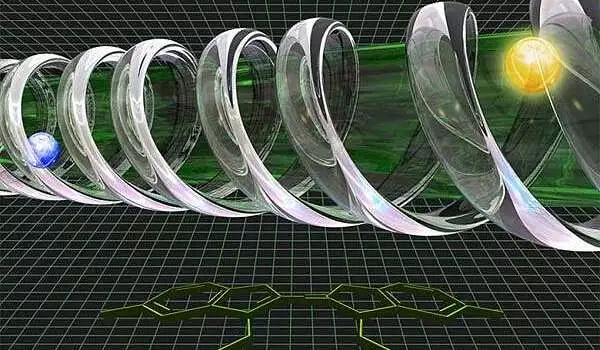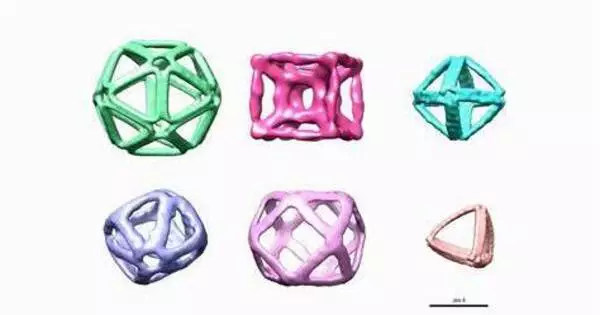The technique of folding DNA strands into specific, predetermined shapes using complementary base pairing is known as DNA origami. Researchers have looked into its potential applications in a variety of fields, including nanoelectronics, drug delivery, and nanorobotics.
A collaborative team of researchers led by Prof. Cees Dekker at TU Delft, in collaboration with international colleagues, introduces the DNA origami nanoturbine, a pioneering breakthrough in the world of nanomotors. This nanoscale device, which harnesses power from ion gradients or electrical potential across a solid-state nanopore to drive mechanical rotations, could represent a paradigm shift.
The design, construction, and driven motion of a ‘DNA origami’ turbine with three chiral blades, all within a minuscule 25-nanometer frame, operating in a solid-state nanopore, are at the heart of this groundbreaking discovery. Researchers can now control the rotational direction of two chiral turbines by cleverly designing two chiral turbines. On October 26, their findings were published in Nature Nanotechnology.
Our nanoturbine has a 25-nanometer-diameter rotor made of DNA material, with blades configured in either a right-handed or left-handed sense to control rotation direction. This structure operates by docking in a strong water flow, which is controlled by an electric field or a difference in salt concentration, through a nanopore, a tiny opening in a thin membrane.
Prof. Cees Dekker
Nanoturbines: the heart of advancements
From windmills to airplanes, flow-driven turbines have been at the heart of many revolutionary machines that have shaped our societies. Turbines are critical for fundamental processes in life, such as the FoF1-ATP synthase, which produces fuel for biological cells, and the bacterial flagella motor, which propels bacteria.
“Our nanoturbine has a 25-nanometer-diameter rotor made of DNA material, with blades configured in either a right-handed or left-handed sense to control rotation direction. This structure operates by docking in a strong water flow, which is controlled by an electric field or a difference in salt concentration, through a nanopore, a tiny opening in a thin membrane. We used our turbine to propel a rigid rod at 20 revolutions per second,” Shi explains.

A fascinating revelation
One of the most intriguing discoveries of this research is the unique nature of the DNA origami nano-turbine’s rotation. Its behaviour is influenced by ion concentration, allowing the same turbine to spin either clockwise or anticlockwise, depending on the concentration of Na+ ions in the solution. This unique feature, exclusive to the nanoscale realm, results from the intricate interplay between ions, water, and DNA.
These findings, rigorously supported by extensive molecular dynamics simulations by the group of Aleksei Aksimentiev at University of Illinois and theoretical modelling by Ramin Golestanian at MPI Göttingen, hold the promise of expanding the horizons of nanotechnology, and offer numerous applications. For example, in the future, we might be able to use DNA-origami to make nanomachines that can deliver drugs into the human body, to specific types of cells.
DNA origami
The study’s supervisor, Cees Dekker, explains their methodology: “Together with our collaborators at Hendrik Dietz’s lab at the Technical University of Munich, we used insights from our previous work on DNA rotary motors to now create a turbine with full control over its design and operation.” The ‘DNA origami’ technique creates dynamic 3D nano-objects by utilizing the specific interactions between complementary DNA base pairs. This design allows us to control the direction of rotation of the turbine in our nanopores using the handedness of the blades, as well as easily integrate the turbine with other nanomachines.
A new step towards active transmembrane nanomachines
This research accomplishment comes on the heels of the introduction of the DNA active nanorotor, a self-configuring device capable of converting energy from electrical or salt gradients into practical mechanical work, last year.
“We’ve revealed the fundamental principles behind propelling a nanoscale rotor using water and salt in nanopores,” says Xin Shi, reflecting on their remarkable journey. This year’s breakthrough, fueled by rational design, ushers us into the next stage of our journey. The previous paper’s foundational principles, combined with the innovations in this one, pave the way for the future of biomimetic transmembrane machines capable of harnessing energy from salt gradients, a vital energy source used by biological motors.”





